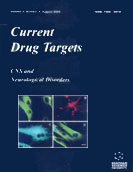Abstract
A lack of inhibition, particularly that mediated by gamma-amino butyric acid (GABA), the main inhibitory transmitter of the central nervous system (CNS), is responsible for many pain states. Until recently, few GABA acting drugs were available and were prescribed mostly for relieving muscle spasms, anxiety and epilepsy, but rarely for pain. The basic metabolic pathway of GABA is well known and we are now beginning to understand the function of this neurotransmitter in the complex circuitry underlying pain, especially in the context of nerve injury. Analgesic compounds are now being developed targeting GABA transporters as well as GABA associated enzymes and receptors. Some GABA analogs act by inhibiting ion channels, a property that contributes to their analgesic effects. However, despite considerable progress in developing new compounds, the use of systemically acting GABAergic drugs is limited by unwanted side-effects on systems other than those involved in pain, and by the fact that in certain areas of the brain, GABA can enhance rather than reduce pain. The advent of new drugs targeting subtypes of GABA receptors and transporters and the possibility of using newly developed delivery systems, such as intrathecal pumps and viral vectors, to target specific areas of the nervous system will likely help circumvent these problems.
Keywords: nociception, analgesia, hyperalgesia, peripheral nerve injury, gaba transporter, gaba receptor
 11
11

















